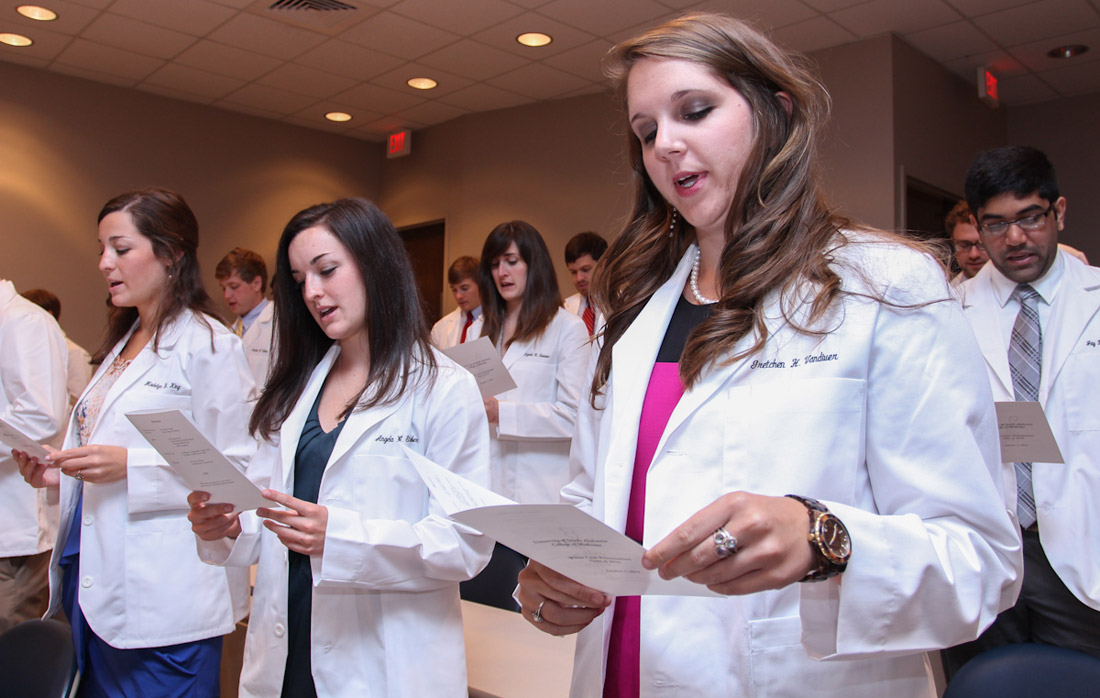Newswise — In the largest national survey of its kind, researchers from UCLA and UC San Diego measured medical students’ attitudes and beliefs about complementary and alternative medicine (CAM) and found that three-quarters of them felt conventional Western medicine would benefit by integrating more CAM therapies and ideas.
The findings will be published in the online issue of Evidence-based Complementary and Alternative Medicine (eCAM) on January 20, 2010.
“Complementary and alternative medicine is receiving increased attention in light of the global health crisis and the significant role of traditional medicine in meeting public health needs in developing countries,” said study author Ryan Abbott, a researcher at the UCLA Center for East-West Medicine. “Integrating CAM into mainstream health care is now a global phenomenon, with policy makers at the highest levels endorsing the importance of a historically marginalized form of health care.”
CAM, which includes therapies such as massage, yoga, herbal medicine and acupuncture, is characterized by a holistic and highly individualized approach to patient care. It’s emphasis is on maximizing the body’s inherent healing ability; getting patients involved as active participants in their own care; addressing the physical, mental and spiritual attributes of a disease; and preventive care. While interest in these fields has increased dramatically in the United States in recent years, information about such therapies has not yet been widely integrated into medical education.
“Even with the high prevalence of CAM use today, most physicians still know little about non-conventional forms of medicine,” said study author Michael S. Goldstein, Ph.D., a senior research scientist at the UCLA Center for Health Policy Research and professor of Public Health and Sociology, UCLA. “Investigating medical students’ attitudes and knowledge will help us assess whether this may change in the future.”
The team of UCLA and UC San Diego experts in the fields of CAM, integrative medicine, Western medicine, medical education and survey development created a novel 30-question survey and sent it to 126 medical schools throughout the United States. In return, the team received 1,770 completed surveys from a pool of about 68,000 medical students nationwide, roughly three percent.
While the current results offer valuable insight into medical students’ perceptions of CAM, given the low response rate, researchers plan future studies to further refine the tool and see if the findings can be more generalized.
Researchers found that although medical students endorsed the importance of complementary and alternative medicine, obstacles remain that may prevent future doctors from recommending these treatments in their practices. According to the findings:
• 77 percent of participants agreed to some extent that patients whose doctors know about complementary and alternative medicine in addition to conventional medicine, benefit more than those whose doctors are only familiar with Western medicine.
• 74 percent of participants agreed to some extent that a system of medicine that integrates therapies of conventional and complementary and alternative medicine would be more effective than either type of medicine provided independently.
• 84 percent of participants agreed to some extent that the field contains beliefs, ideas, and therapies from which conventional medicine could benefit.
• 49 percent of participating medical students indicated that they have used complementary and alternative treatments however few would recommend or use these treatments in their practice until more scientific assessment has occurred.
“Our research suggests that persuading doctors to integrate CAM will require investment in the types of clinical research that form the backbone of Western medicine,” adds Abbott. “Even now, medical schools have the opportunity to train the next generation of medical practitioners in health care systems outside of conventional medicine. Core values of CAM can help students develop a more holistic and individualized approach to patient care.”
The study also found that the further along in school the student was, the more likely they were to believe their learning regarding CAM therapies was sufficient. Still, researchers note that more than 60 percent of participants favored more education related to this field during their time in medical school. Although more than half of all U.S. medical schools currently offer some type of CAM course, researchers say these courses could be augmented or streamlined into more formal, standardized curricula.
“Although the content of integrative medicine programs remains controversial, medical schools across the country are moving forward with ambitious new programs to teach the next generation of health care leaders,” said Dr. Ka Kit Hui, Wallis Annenberg Chair in Integrative East-West Medicine at UCLA, founder and director, UCLA Center for East-West Medicine, and chair, of UCLA’s Collaborative Centers for Integrative Medicine. “Through the Collaborative Centers for Integrative Medicine, UCLA has become one of the nation’s leading academic centers for integrative medical education. UCLA offers training programs for health sciences students and residents, as well as fellowships for clinicians and researchers.”
Hui added that the importance of integrative medical education is increasingly being realized outside of UCLA. Forty-four highly esteemed academic medical centers now comprise the Consortium of Academic Health Centers for Integrative Medicine, which was established to advance the principles and practices of integrative health care within academic institutions. It provides a community of support for academic missions and a collective voice for influencing change. The Consortium also helps disseminate evidence-based information on CAM, informs health care policy, and supports medical education.
The study was funded by the National Institutes of Health, the Gerald Oppenheimer Family Foundation, and the Annenberg Foundation.
Source: University of California, Los Angeles (UCLA), Health Sciences
This information is brought to you by Dr. XiPing Zhou, M.D.O.M., L.Ac. Dr. Zhou is the founder & president of East West Healing Arts Institute Massage School, Dr. Zhou’s Acupuncture & Pain Management Clinic, Madison Family Wellness Community Clinic, The Herbal Palace, & China Delight Tours. Visit any of these websites to learn about Chinese medicine and culture.

